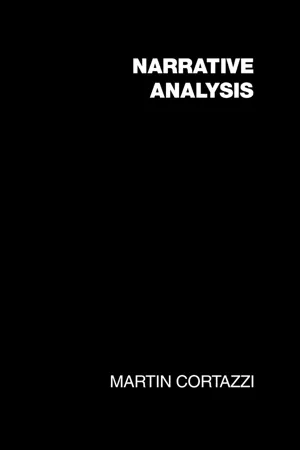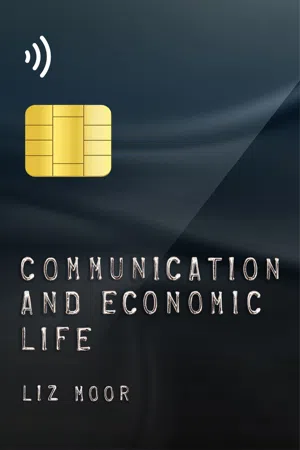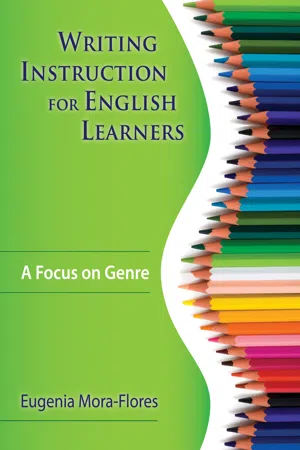Narrative Form
Narrative form refers to the structure and organization of a story, including its plot, characters, setting, and point of view. It encompasses the way in which the story is told and the techniques used to convey the narrative, such as first-person or third-person narration, flashbacks, or nonlinear storytelling. Narrative form plays a crucial role in shaping the reader's experience and understanding of the story.
6 Key excerpts on "Narrative Form"
- eBook - ePub
- Martin Cortazzi(Author)
- 2014(Publication Date)
- Routledge(Publisher)
...Chapter 5 Literary Models of Narrative Introduction Within literary theory there is no universally accepted model of narrative, although since the 1970s the theory of narrative has become a central topic in literary study. The continuous shift in the meaning understood by the term ‘narrative’ in the history of literature, and subsequent description of this, itself illustrates an important point: the tendency for critics and theorists to look for an orderly development of narrative works and narrative theory is evidence of how people use narratives to impose patterns on the past in order to tell a coherent story about it (Martin, 1986). In this way it is suggested that narrative models in literature have developed from Russian formalism through French structuralism towards post-structuralist and reader-oriented theories (Eagleton, 1983; Martin, 1986). Other important recent branches of narrative study include Marxist, feminist and psychoanalytic views. In the following sections attention will be given to selected concepts of narrative. These are definitions of narrative, views of structural narratology, and some particular aspects of narration including tense, mood and voice. These concepts are derived mainly from structuralist views which attempt to apply by analogy models of sentence grammar from linguistics to literary discourse. There is an obvious major limitation in transferring insights from literary theory to an analysis of oral narratives of personal experience. Literary theory has primarily focussed on novels and short stories. It is expected that there will be far greater complexity, artistry and imagination in such written works, compared with the spontaneous, oral non-fictional narratives of personal experience...
- eBook - ePub
Researching Interpretive Talk Around Literary Narrative Texts
Shared Novel Reading
- John Gordon(Author)
- 2020(Publication Date)
- Routledge(Publisher)
...10 Discussing and Navigating Narrative Form How Texts Shape Talk 10.0 Introduction Pedagogic Literary Narration comprises how teachers structure and organise reading of novels for study, and how they signpost and direct reading. This chapter considers how the form of the focal study text influences book group conversations about literature and the nature of interaction that develops around the text, even where no teacher is present. How do book group members position themselves and others in the absence of a teacher, to the text and to the act of reading? With this focus, the chapter develops the interests of Chapter 6, which attended to reader positioning around quotations in school, now in a book group format similar to the one described in Chapter 9. This chapter also refers to Chapter 8 in a cumulative approach, recognising that aspects of discussion identified in earlier chapters are relevant to how participants orient to the focal text’s genre and form. The effects of choices made by teachers and speakers as they invoke texts have some affinity with Douglas Barnes’s concept of ‘ differentiated attentiveness’ (Barnes, Britton, & Rosen, 1969), the notion that numerous verbal and paralinguistic strategies used by speakers serve to foreground salient features of pedagogic content – here, the literary text – for students. In formal literary study, these features relate to the narrative structure of the novel taught, and are articulated relative to the discourse of narratologies. Transcript data presented here suggest that the Narrative Form of the study novel has a bearing on how texts are discussed even where there is no teacher present. In book group conversation, the institutional discourse of specific narratologies is not accessed with the intent it might be in a school or university setting, though participants develop in their conversation a co-constructed analysis of the focal text narrative...
- eBook - ePub
- Liz Moor(Author)
- 2021(Publication Date)
- Polity(Publisher)
...And as Carolyn Steedman (1986: 6) notes, the stories we tell about ourselves – about how we have come to be the person we are, or in the place that we are – are often a form of political analysis in miniature, a way of connecting individual history to national or world history. They may also be in conflict with the ‘official interpretive devices of a culture’. When we tell our own story, we may find ourselves offering explanations for events, or justifications for actions and decisions, that run counter to standard ways of understanding things. Narratives are also constrained by their form and genre and by the contexts and audiences for their telling. This places certain limits on how they can reveal the world. As Stuart Hall points out, even the most graphic and terrible events, if recounted within the genre of a children’s story, will almost inevitably have a ‘happy ending’; 2 in that sense, meanings are ‘already concealed or held within the forms of the stories themselves’ (1984: 7). Just as the factual narratives of television news are constrained in how they report economic issues by a series of conventions, time constraints, assumptions about the audience, and so on, so the genre conventions of drama, epic, saga, comedy and farce also exert their own pressures. Form as well as content matters in determining what narratives – including economic narratives – can do. Literary fiction and the repudiation of the market Fictional narratives about the economy have often adopted a sceptical attitude to the personal and social effects of capitalism and commerce. To understand why this is so, it is useful to consider the historical relationship between creative writers and moral views of market society (Fourcade and Healy 2007)...
- eBook - ePub
Writing Instruction for English Learners
A Focus on Genre
- Eugenia R. Mora-Flores(Author)
- 2008(Publication Date)
- Corwin(Publisher)
...Narratives are the stories children love to hear, read, and enjoy. Though many narratives are accounts or recounts of things we have done or stories we have heard, our experiences also give us ideas for original stories. The following list details the main aspects of narrative writing: • Can be fiction or nonfiction, based on personal experiences, inspired by personal experiences, or completely made up; • Includes literary elements of plot, setting, and characters that are well defined and developed; • Answers who, what, when, where, how, and why about something we have experienced or have created; • Uses colorful details to help the reader share in the experience with you; • Presents information logically (from beginning to end) while at the same time can be craftly written with flashbacks or cyclical plotlines; • Contains dialogue (when appropriate) to provide insight into the thoughts and actions of the characters; • Provides a point or theme to the story; and • Can be written from any point of view. A misconception about English learners (ELs) is that they cannot write until they have mastered at least a conversational level of the English language. However, as we noted in the opening chapter, all students have ideas for stories through their lived experiences. These experiences are not language specific; all students have gathered a vast amount of ideas from their lives to write about. What we need to do as teachers is to help them find the medium by which to share their stories in English. This includes allowing ELs opportunities to express themselves in creative ways (see Figure 1.5, Written Output Development for English Learners). They can begin by drawing or sketching their ideas. Eventually they will gradually transfer what they are learning in English, orally and in writing, to write words and stories. English learners need to feel safe playing with language to share their ideas in English...
- eBook - ePub
Jesus the Hero
A Guided Literary Study of the Gospels
- Leland Ryken(Author)
- 2021(Publication Date)
- Lexham Press(Publisher)
...1 Narrative Genre The Primary Form W hen we speak of narrative, or story, as the primary form of the Gospels, we have two dimensions in view. One is the overview of each Gospel as a book. While this narrative superstructure, or umbrella, for each book does not yield a methodology for interacting with individual passages, it is useful information to have at our disposal as we interact with individual units, which always contribute to an overall story. The other dimension is that we need to assimilate individual stories in the Gospels by using the usual tools of narrative analysis. The next module of this chapter will elaborate on that. The Narrative Nature of the Gospels Even though we do not read or teach the Gospels in a single session, it is important that we sometimes take an overview of them as a book. A book has a beginning, middle, and end. In the Gospels, this takes a Narrative Form. The Gospels do not have a thesis and subordinate points the way an informational book does. Instead, they tell the story of Jesus’ life and ministry. The beginning is Jesus’ birth and his initiation of his three-year public life. After that we accompany Jesus during his ministry as a traveling teacher and miracle worker. At the end, the Gospel writers devote a substantial segment of their account to the events surrounding Jesus’ last weeks on earth. This does not mean that the entire middle of the Gospels consists of events. Nearly as much space is devoted to Jesus’ discourses and teaching (including dialogues and parables) as to stories that recount what he did. Nonetheless, all of the material fits into the general flow of the story of Jesus. What are the implications? First, things fall into place if we operate with an awareness that stories consist of three main elements—action or plot, characters, and settings...
- eBook - ePub
- David Herman(Author)
- 2011(Publication Date)
- Wiley-Blackwell(Publisher)
...J. Greimas) conceived of as a science of narrative modeled after the “pilot-science” of Ferdinand de Saussure’s structural linguistics. 1 As I discuss in greater detail below, the structuralists drew not only on Saussure’s ideas but also on the work of Russian Formalist literary theorists, who studied prose narratives of all sorts, from Tolstoi’s historically panoramic novels to tightly plotted detective novels to (Russian) fairy tales. This broad investigative focus helped initiate the narrative turn, uncoupling theories of narrative from theories of the novel, and shifting scholarly attention from a particular genre of literary writing to all discourse (or, in an even wider interpretation, all semiotic activities) that can be interpreted as narratively organized. That same shift helps explain why the present volume is titled Basic Elements of Narrative rather than Basic Elements of the Novel – even though I use narrative fiction as a key source of illustrative examples, written fictional texts being a highly developed form of storytelling across the world’s literatures. Taking their cue from the Formalists, and noting that stories can be presented in a wide variety of textual formats, media, and genres, structuralists such as Barthes ([1957] 1972, [1966] 1977) argued explicitly for an integrative approach to the analysis of narrative – an approach in which stories can be viewed as supporting many cognitive and communicative activities, from spontaneous conversations and historiographic writing to visual art, dance, and mythic and literary traditions. Only after the heyday of structuralism, however, did such an approach to narrative begin to emerge. Although more needs to be done to promote genuine dialogue and exchange among story analysts working in different fields (Hyvärinen 2006), it is undeniable that the past decade in particular has seen an exponential growth of cross-disciplinary research and teaching activity centering around narrative...





